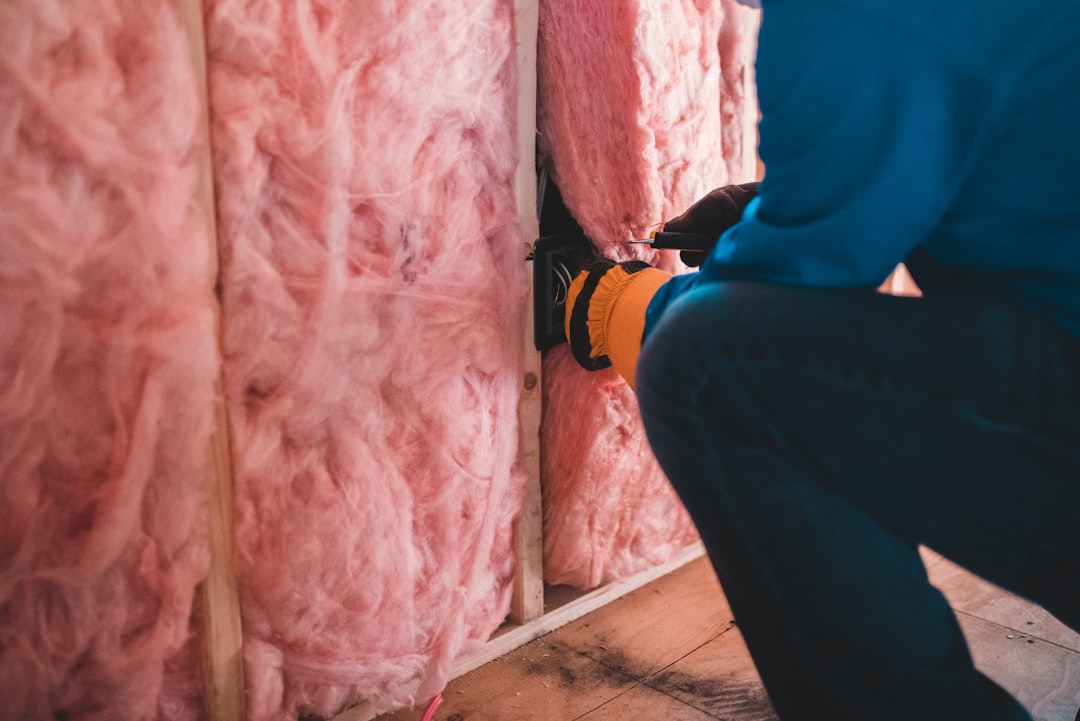Insulation
Insulation is a critical component in improving energy efficiency in buildings, reducing heating and cooling costs, and mitigating climate change impacts. This page explores various insulation technologies and their applications.
Image credit: Unsplash
job openings
View open jobs in this Solution
Example Companies
- Aerogel Technologies - Develops advanced aerogel materials for insulation applications.
- BASF - Produces a range of insulation materials, including innovative foam insulations.
- Owens Corning - Manufactures fiberglass insulation and other building materials.
- Knauf Insulation - Offers a variety of insulation solutions for residential and commercial buildings.
- Kingspan - Specializes in high-performance insulation and building envelope solutions.
Overview
Insulation plays a crucial role in improving energy efficiency in buildings and reducing greenhouse gas emissions. Advanced materials like aerogels, nanofoams, and phase-change materials are revolutionizing the insulation industry.
Learn More
Progress Made
Significant advancements have been made in insulation technologies:
- Aerogel Insulation: Composed of up to 99.8% air, making it incredibly lightweight and efficient in preventing heat transfer.
- Nanofoams: Advanced materials with improved insulation properties.
- Phase-Change Materials: Materials that can absorb and release heat, providing dynamic insulation.
Solutions by Sector
Residential Buildings
- Attic Insulation: Improving insulation in attics to reduce heat loss.
- Wall Insulation: Adding insulation to walls in existing homes.
- Floor Insulation: Insulating floors, especially in homes with crawl spaces.
Case Studies:
- Passive House, Germany: Implemented advanced insulation techniques to achieve near-zero energy consumption (Passive House Institute).
- Owens Corning's PINK Next Gen™ Fiberglas™: Advanced fiberglass insulation for residential applications (Owens Corning).
- Aerogel-Enhanced Blankets: Used in retrofitting older homes for improved energy efficiency (Aspen Aerogels).
Commercial Buildings
- Building Envelope Insulation: Comprehensive insulation solutions for commercial structures.
- HVAC Insulation: Insulating heating, ventilation, and air conditioning systems.
- Cool Roofs: Reflective roofing materials combined with insulation for energy efficiency.
Case Studies:
- Empire State Building Retrofit: Comprehensive insulation upgrade as part of a major energy efficiency project (Johnson Controls).
- BASF's WALLTITE®: Spray polyurethane foam insulation used in commercial buildings (BASF).
- Kingspan's QuadCore™ Technology: High-performance insulation core for commercial building envelopes (Kingspan).
Industrial Applications
- Process Piping Insulation: Insulating industrial pipes to reduce energy loss.
- Storage Tank Insulation: Insulating large storage tanks in industrial facilities.
- Cryogenic Insulation: Specialized insulation for extremely low-temperature applications.
Case Studies:
- NASA's Use of Aerogels: Aerogel insulation in space applications (NASA).
- Aspen Aerogels' Pyrogel®: Used in industrial pipe insulation for high-temperature applications (Aspen Aerogels).
- BASF's Elastopor®: Spray foam insulation for industrial refrigeration units (BASF).
Lessons Learned
- Quality Matters: Importance of using high-quality insulation materials for optimal performance.
- Proper Installation: Correct installation and climate adaptation are crucial for insulation effectiveness.
- Maintenance is Key: Regular upkeep ensures insulation longevity and prevents potential issues.
- Holistic Approach: Insulation works best when integrated with other energy-efficient building practices.
Challenges Ahead
- Cost and Skill Barrier: High installation costs and skilled labor shortage pose obstacles.
- Research Needed: More research required to enhance insulation performance and accessibility.
- Retrofitting Existing Buildings: Challenges in upgrading insulation in older structures.
- Regulatory Changes: Adapting to evolving building codes and energy efficiency standards.
Best Path Forward
- Raise Awareness: Increase public knowledge about insulation benefits for widespread adoption.
- Financial Incentives: Offer economic motivations to encourage insulation installation.
- Government Regulation: Mandate insulation standards in new buildings and major renovations.
- Research and Development: Invest in developing more efficient and sustainable insulation materials.
- Training Programs: Establish programs to train skilled workers in insulation installation techniques.
Image credit: Unsplash
